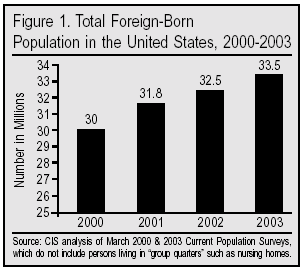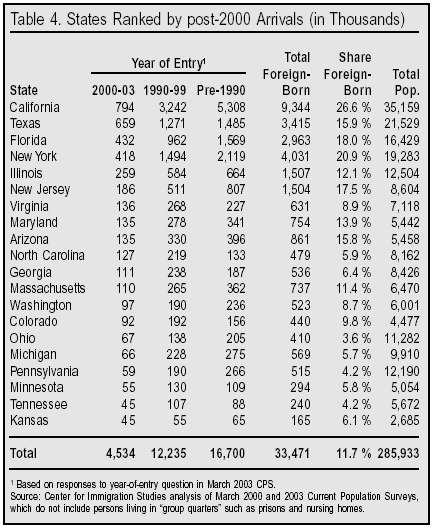Introduction
An immigration policy is a guideline for the admission of foreigners into a country. Various countries have been adjusting their immigration policies to cope with the rapidly changing economic, social and political system of their country. In this essay, focus is made towards the immigration policies of US, China and Switzerland. The reasons for choosing these countries are; the frequent adjustment in their immigration policies to suit the increasing needs of immigrant. Secondly, these countries have been experiencing a robust growth in their economy over the years that necessitated an increase in the numbers of workers needed to help in the production process. Thirdly, there has been an increase in the re-union of families living abroad especially in US thus leading to changes in the immigration policy to accommodate these groups of people.
Method of collecting information in this essay will involve analyzing the current trend in the inflow of immigrants in the respective country under study. Information be collected from the ministry of immigration of the country under study or from any other ministry concerned with the trends of immigration in the respective country. Other sources of information will include articles from the internet and journals discussing immigration and their influence on political system of the concerned country.
Immigration Policy in US
US immigration policy developed from as early as 1790 when the Congress established a process where people born abroad could be assimilated into being American citizen with the first law established in 1875 seeking to prohibit criminals’ and prostitutes from migrating into US. As the Federal government grew and it political jurisdiction expanding, Congress enacted the Immigration Service in 1891 with authority give to the Federal Government. After World War I, the number of immigrants increase leading to the establishment of Quota system in 1921 hence a limited number of Visas were distributed each year to families that were re uniting. In 1965, Immigration and Nationality Act Amendment abolished national origin quota and establish right to immigration based on family links or skills possessed by the immigrant. There are various amendment that have been made since then such as the Immigration Act of 1990 to admit people based on diversity, Refugees Act of 1980 to admit refugees, Immigration Reform Act and Control Act of 1986 to control unauthorized immigration, Illegal Immigration Reform and Responsibility act and Homeland Security Act of 2002. Current immigration policy is categorized into two; permanent admission which the applicant is granted Green card and temporary admission (Congressional Budget Office Paper, 2). Total population for foreigners between 2000 and 2003 is as shown in figure 1 while population of foreigners per state in comparison to unemployment is shown in figure 2 below.


Immigration Policy in Switzerland
There was no immigration control in Switzerland prior to 1960 hence any body could seek for a job and work freely without being questioned. However, with the gradual growth in the number of immigrants that threaten its political system, a measure had to be introduced to govern the influx of foreigners. This was done in 1970 with the introduction of quota system of admission that has been in place since then. This system was meant to strike a compromise between the high demand for labor and population control which had been feared to dilute the political system of the country. This system has been marked with complain that it favors sectors incentives in unskilled labor and allotment is made on political grounds. This has led to the recent developments where a three circle model has been adopted which anticipate free mobility with European Union for political and economic integration within the region. The categories of permit in Switzerland include; Short term permit (A) for nine months, one year permit (B) awarded to people staying for more than a year, establishment permit (C) issued to family born out of permit B, Cross border permit (G) for people of neighboring countries.
Immigration Policy in China
China has little history on its immigration policy. This is because; China had been experiencing little immigrants into its country. However, many Chinese had been migrating to other countries such as the US and Taiwan. However, as a early as 1700, emigration out of China was totally forbidden by the imperial Court and the emperor decreed that anybody leaving China should be beheaded on his/her return. In the mid 19th century, there was a population increase in China coupled with low levels of agriculture to sustain the population. This led to signing of emigration treaties with Western powers for people to work in Europe hence earning a living. The first wave of Chinese immigrants to America came in 1849 during the Gold rush in California where they helped in provision of cheap labor. There has also been a substantial emigration into Canada with a lot of misery experienced by the Chinese immigrants. On immigration policy in China as of today, permission for entering China must be obtained from competent authorities of Chinese government. China has been making various amendments in its immigration policy to attract foreign skilled labor into the country. This would be incorporated in the Chinese professional personnel-building program proposed in 2005. In addition in the New Zealand-China Trade Agreement October 1, 2008, the following policies were agreed upon China skilled workers policy, Group Transit Visa for Chinese nationals, China special work policy and China Working holiday scheme.
Similarities
All the immigration policies above have some aspects which are similar to each other. First, the purpose for their formulation is almost the same for the three countries. The policies were formulated to incorporate the increasing demand for labor in these countries. Due to the robust growth in the their economies, they experienced high levels of production that required high numbers of both unskilled and skilled workers hence the call by employers to their respective government to allow immigrants into their country to provide the required additional labor. Immigration policies were also formed to re-unite members of different families who were either separated as a result of colonization or as a result of human trafficking. Therefore, the immigration policy in the three countries aimed to provide family re-union. The immigration policies have similarities in that they all allow the settlement of refugees in their country. In addition, their similarity can be seen in the categorization of Visas issued. In all the three countries, there are at least two categories of admission. That is, on either permanent basis or temporary basis.
Differences
There are no fundamental differences between these policies a part from the fact that in other countries such as China the immigration policies are very strict especially in pertaining permanent residency in China. Unlike US and Switzerland that practice a fair policy using Quota system in providing permanent residency to the applicant, China has very stringent measure on permanent residency and to make matters worst, it only accept skilled immigrants. Another clear different in the policies is on admission. While China immigration policy concentrates mainly on accommodating immigrant of Asian origin as seen in the diagram above, U.S and Switzerland has no restriction on who is to be admitted so long as one has passed the qualification test required. In addition, China Policies are more concentrated on emigration out of the country rather than immigration into the country. This is especially due to its large population which needs to be checked by prohibiting more entry into the country. Therefore, China’s immigration policy is based on limiting more immigrants unlike Switzerland and US policies that are intended to encourage more immigrants. Lastly, there are various loopholes in all of the above policies that allow illegal immigrants into their countries. In all the three countries, illegal immigrants have been increasing each day by exploiting the weakness in the policy.
Implication of the Immigration Policy
Politically, the immigration policies have tended to dilute the political system in the country they have migrated into by providing an alternative different system of governance. This is through aspiring for political positions in the country and once elected into office, instituting reforms that are not in line with the existing form of political system. Historical trends especially in US have indicated that immigrants have greatly shaped the political system of US. Especially the incorporation of the African Americans population and their relatives in American system really changed the governance system. It led to expansion policy of America thereby increasing the jurisdiction of the Federal government. Culturally, immigration policies have diluted ancient cultural practices of the natives through the process of civilization. Many cultures especially in America are non existent as a result of immigration policies that has allowed diversity into American society.
It can be seen that the immigration policies have really helped in developing the various economies in which these policies have been incorporated. The free movement of labor has provided enough labor for production thereby increasing on the GDP growth and consequently growth in the economy. The immigration policies especially the one touching on asylum of refugees has really helped to provide hostage to the innocent population displaced by either civil strife or political strife. In the process, countries such as US and Japan have been recognized for their humanitarian aid thereby strengthening their political system.
Work Cited
Center for Immigration Studies. Immigration in a Time of Recession. An Examination of Trends since 2000. Web.
Congressional Budget Office Paper. Immigration Policy in United States. 2009. Web.
Gross, Dominique N., and Immigration policy and foreign population in Switzerland. Simon Frazer University. 2009. Web.
Ministry of Foreign Affairs and of the People of Republic of China. Web.